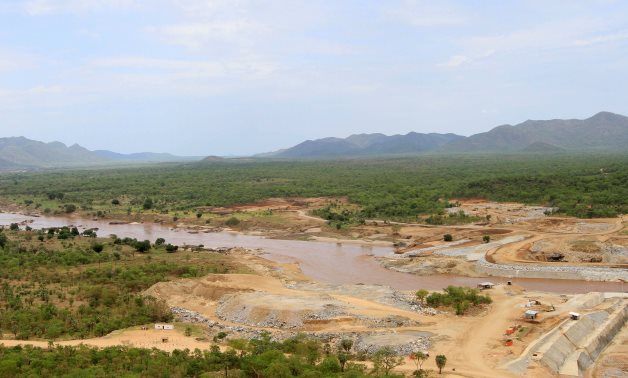
FILE PHOTO: The Blue Nile flows into Ethiopia's Great Renaissance Dam in Guba Woreda- Reuters
CAIRO 26 September 2020: In his speech at the United Nations General Assembly (UNGA) meetings on Friday, Ethiopian Prime Minister Abiy Ahmed said that there is “no intention” to cause harms to the Nile downstream countries (Egypt and Sudan) with the construction of the controversial Grand Ethiopian Renaissance Dam (GERD).
“I want to make it abundantly clear that we have no intention to harm those countries [downstream countries], but what we are essentially doing is to meet is our electricity demands from one of the cleaner resources of energy. We cannot afford to continue keeping more than 65 million of our people in the dark,” he said.
“We are steadfast in our commitment to addressing the concerns of downstream countries and reaching a mutually beneficial outcome in the context of the ongoing AU-led process," he added.
Abiy Ahmed’s comments came four days after Egyptian President Abdel Fattah El Sisi’s speech at the UNGA. In his speech, President Sisi said that the Nile River must not be monopolized by one state.
“For Egypt, the Nile water is an existential matter. This however does not mean that we want to undermine the rights of our brothers and sisters sharing with us the Nile Basin,” Sisi said.
“Nevertheless, it is unacceptable for the negotiations to continue forever in an attempt to impose realities on the ground because our people yearn for stability and development towards a new promising era of cooperation,” Sisi added.
The difference between Egypt, Sudan, and Ethiopia dates back to May 2011 when Ethiopia started building the dam and since then the three countries could not get out of this logjam; Egypt voiced concern over its water share [55.5 billion cubic meters]. Three years later, a series of tripartite talks between the two countries along with Sudan began to reach an agreement while Ethiopia continued the dam construction.
In 2015, the three countries signed the Declaration of Principles, per which the downstream countries [Egypt and Sudan] should not be negatively affected by the construction of the dam. Since then, the talks have been resumed, but In October 2019 blamed Addis Ababa for hindering a final agreement concerning a technical problem, calling for activating the Article No. 10 of the Declaration of Principles, which stipulates that if the three countries could not find a solution to these differences, they have to ask for mediation.
The current points of disagreement concerning a plan for filling Dam in stages, a mechanism for dealing with droughts, prolonged droughts, and years of water scarcity during the process of filling the dam, and a mechanism for dealing with droughts, prolonged droughts, and years of water scarcity during the dam operation, according to a US-drafted deal that was unilaterally signed by Egypt in Washington in January 2020.
Constructions in the Grand Renaissance Dam started on April 2, 2011 at a cost of $4.8 billion. It was built by the Italian construction and engineering company Salini Impergilo. The Italian company is headquartered in Milan. The dam is located on the Nile with a capacity of 74 billion cubic meters, and is expected to generate up to 6,000 megawatts of power.
Comments
Leave a Comment